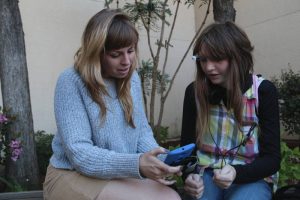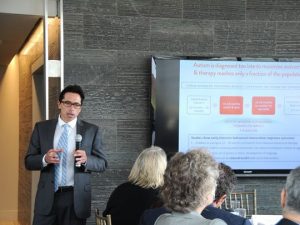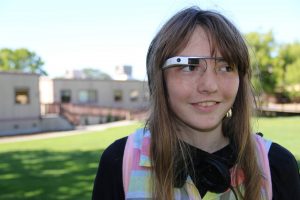Recently, the Autism Society welcomed fifty specially invited guests to a private conference in San Francisco in an effort to determine how high technology will be able to assist children with autism. The event was sponsored by the United Bank of Scotland. Scott Badesch, CEO of the Autism Society believes that such emerging technology as robots and specifically designed Google Glass will help autistic children to better integrate with the world.
All of the advocates and supporters who attended the conference are extremely hopeful that such emerging technology, especially Google Glass, will allow autistic children to participate more fully in the world around them. Badesch brings up a recent YouTube video of a young teenage girl who is using a specific app on her tablet that allows for a text to voice function. The young teen, named Dillan, explains that she now feels that people can actually understand her and see her and she finds the app allows her to understand and retain her thoughts for longer periods of time.
Under the guidance of autism researcher Dennis Wall, there is a project going on at Stanford University that is called the Autism Glass Project. Wall is using 35 pair of Glass, which Google engineers are working to adapt to the needs of autism, and is finding the early work to be successful.
“The results we are seeing are clear,” Wall stated. “in that kids who use Glass later make more eye contact after they no longer wear Glass. Kids naturally connect with wearables and robotics which is why this is so exciting.”
One of the Stanford participants, 14 year old Gabby Warner of Westmont High in Campbell, California, has found some encouraging success using Glass.
“Its helped me to understand some people’s emotions,” Gabby said. “I can tell when a friend is upset better now than I could before.”
The CDC states that about 1 in every 45 children between the ages of 3-17 is afflicted with autism. The affliction, which is affected by brain development, causes challenges with both verbal and non-verbal communication and they tend to fall into repetitive actions and behaviors. They also have an extremely difficult time with social interaction and understanding certain emotions that they are seeing or feeling.

Beth McCarthy, a study manager, works with Gabby to understand a smartphone app that allows her to connect with the Glass
Other advocates believe that because robotics and other technologies are not as intimidating as other humans are, those with autism will make more positive adjustments and be able to use the emerging in-home technology to someday rise to their current challenges and overcome them to a certain degree.
But, as always, funding is a problem. Wall explains that many venture capitalists and other funding sources don’t really see the profit potential in getting this technology to those that most need it.
“We always hear,” said Wall, “that autistic kids aren’t a big enough market. Special needs are seen as a niche. Despite this, there’s an onslaught of new ideas surfacing to see where tech can help.”
PHOTO SOURCES: UBS, Laura Aziz / Unsplash.com, Lindsey Hoshaw / KQED.org



